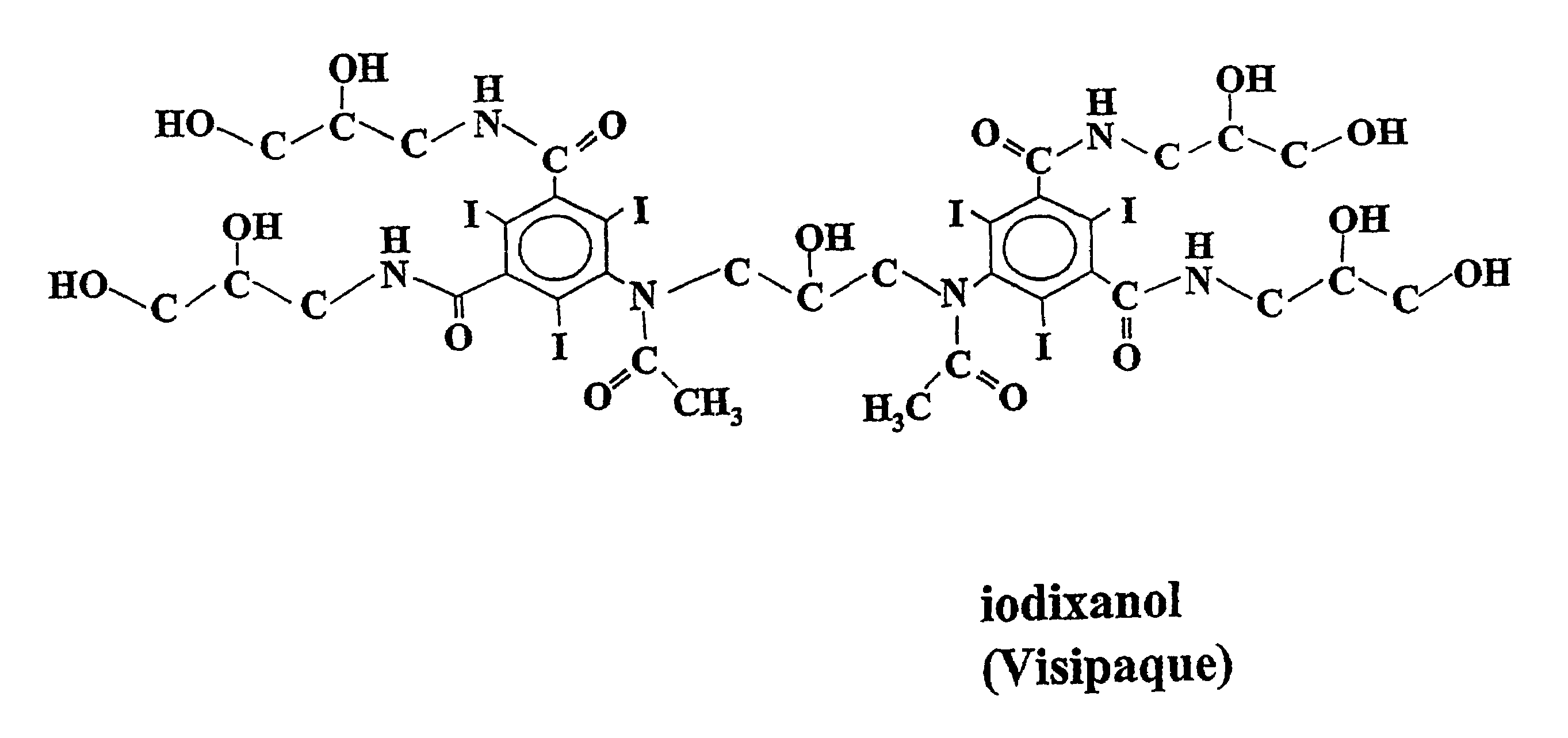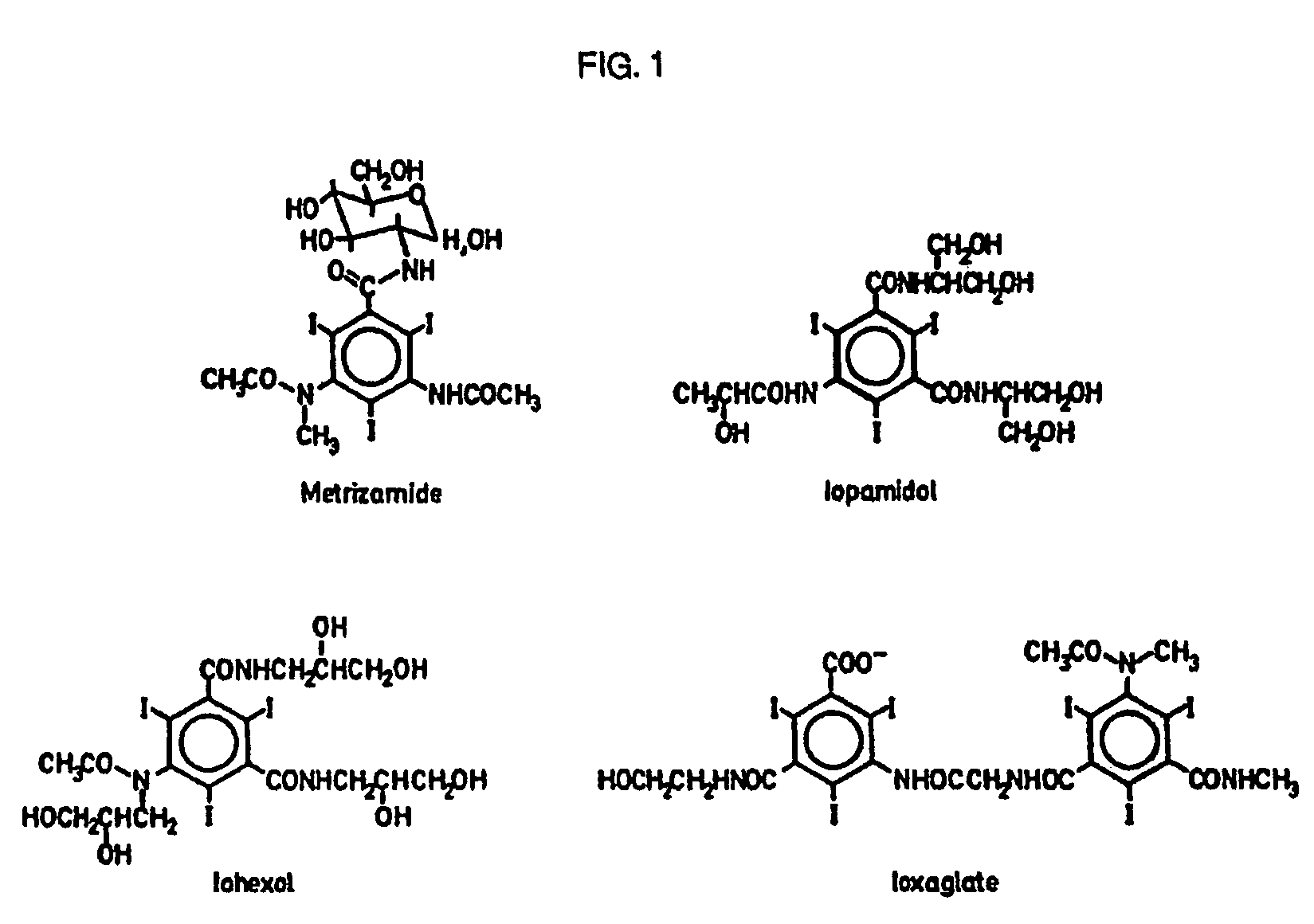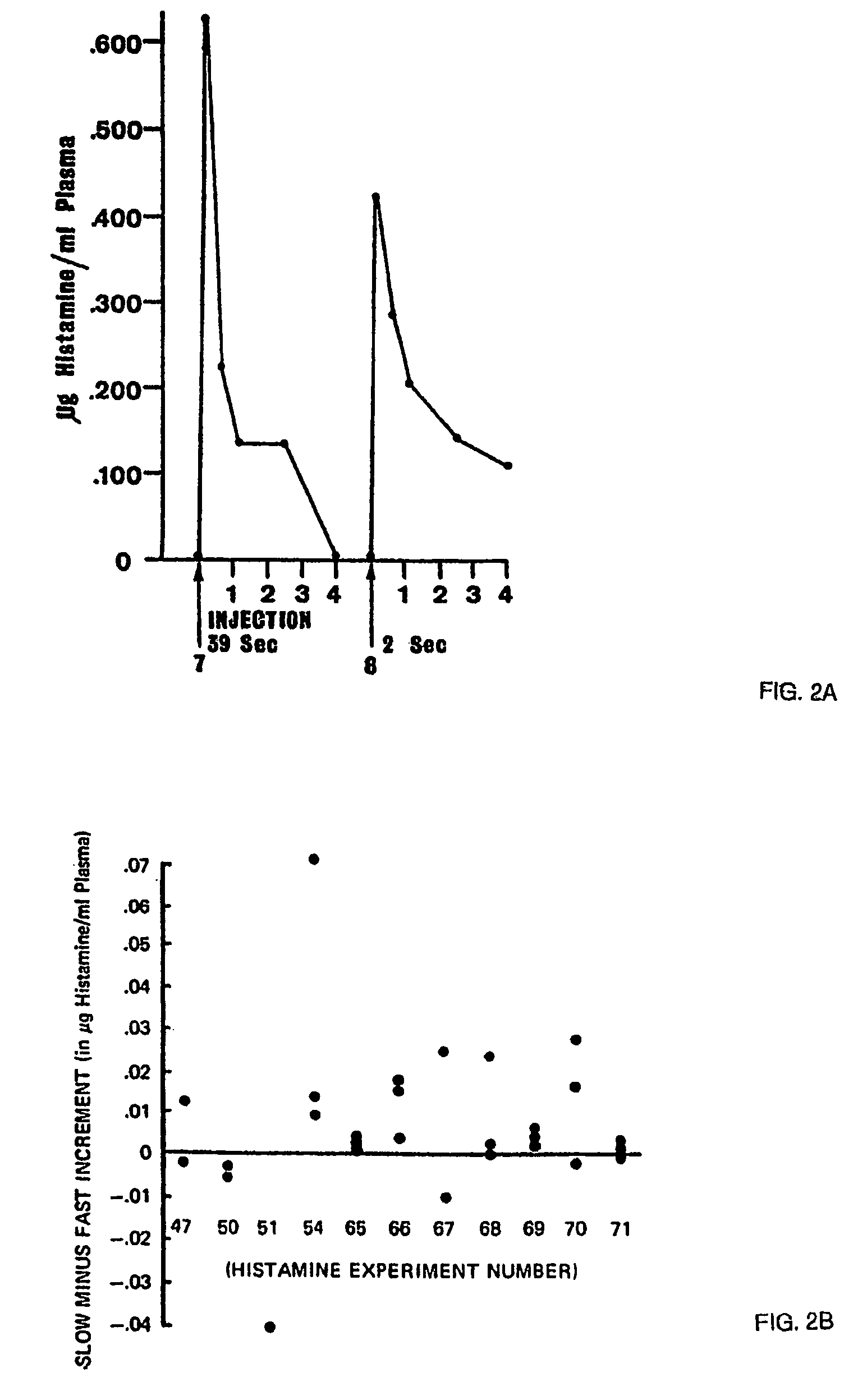Concentrated X-ray contrast media can act as universal antigens and can inhibit or prevent allergic reactions
a contrast media and universal technology, applied in the field of x-ray contrast media, can solve the problems of insufficiently allowing the media to act as haptens, unable to reliably, and inability to reliably, and achieve the effect of preventing the formation of adverse in vivo antigen-antibody complexes
- Summary
- Abstract
- Description
- Claims
- Application Information
AI Technical Summary
Benefits of technology
Problems solved by technology
Method used
Image
Examples
example i
Blood Pressure Changes as an Index of Histamine Release
[0055]Sprague Dawley and Brown Norway rats (300–350 g) were purchased from Harlan Sprague Dawley (Indianapolis, Ind.). The CM utilized were meglumine / sodium diatrizoate, an ionic monomer (ANGIOVIST 370; 370 mg I / ml; Berlex Laboratories, Wayne N.J., USA), meglumine iothalamate, an ionic monomer (Conray; 282 mg I / ml; Mallinckrodt Medical, St. Louis, Mo., USA), IOXAGLATE, an ionic dimer (HEXABRIX; 320 mg I / ml; Guerbet Laboratories Aulong-sousBois, France), IOPAMIDOL, a nonionic monomer (ISOVUE 300; 300 mg I / ml; Bracco Pharmaceuticals, Milan, Italy), IOTROLAN, a nonionic dimer (ISOVIST; 300 mg I / ml; Schering Pharmaceuticals, Berlin, Germany), and IOVERSOL, a nonionic monomer (Optiray 240; 240 mg I / ml, Mallinckrodt). The monomers are either ionic or nonionic molecules consisting essentially of a tri-iodinated fully substituted benzene ring. The dimers are two such benzene rings separated by an aliphatic chain. A Propaq blood pressure...
example ii
Effect of Dimeric CM on Blood Pressure Changes in Anaphylaxis
[0060]To further substantiate the concept that contrast media, acting as pseudoantigens, could interfere with existing antigen-antibody reactions, an experiment was conducted where a series of rats were sensitized to ovalbumin and later challenged the rats by intravenous injections of ovalbumin.
[0061]Varying CM or other materials were injected into the tail vein of anesthetized Sprague Dawley rats (300–400 mg). The CM tested were IOXAGLATE and IODIXANOL. Both are CM dimers and IOXAGLATE is ionic and IODIXANOL is nonionic. The CM injections were done 12 to 14 days after sensitization of the rats by intraperitoneal injections of 1 mg of ovalbumin in normal saline. A Propaq blood pressure apparatus was connected to polyethylene catheters inserted into a carotid artery to monitor mean arterial blood pressure. Injection rates were 6 ml / kg / min. The CM were injected I.V. either 6 hours before, 45 minutes before, concurrent with, ...
example iii
Effects of Monomeric or Dimeric Nonionic CM on Lethality of Ionic Media
[0063]The concept was also tested by examining the potential of a monomer nonionic contrast and a dimer nonionic contrast to diminish the lethality in 300–350 g Sprague-Dawley rats of an ionic monomer CM. The nonionic monomer used was IOVERSOL (Optiray 160, Mallinckrodt; St Louis Mo.). The nonionic dimer used was IOTROLAN (Isovist, Schering, Berlin, Germany). The ionic contrast media used was 70% methylglucamine iothalamate (Conray, Mallinckrodt; St Louis Mo.). An LD-100 technique was used to determine lethality. This technique involves an immediate decision on mortality and is more humane than the LD-50 technique since the animals do not undergo post technique morbidity for variable periods. The determination of death in this technique is done by a continuous I.V. infusion of CM and noting at what dose the animal suspended respirations for a period of at least 15 seconds. For CM toxicity studies the technique co...
PUM
 Login to View More
Login to View More Abstract
Description
Claims
Application Information
 Login to View More
Login to View More - R&D
- Intellectual Property
- Life Sciences
- Materials
- Tech Scout
- Unparalleled Data Quality
- Higher Quality Content
- 60% Fewer Hallucinations
Browse by: Latest US Patents, China's latest patents, Technical Efficacy Thesaurus, Application Domain, Technology Topic, Popular Technical Reports.
© 2025 PatSnap. All rights reserved.Legal|Privacy policy|Modern Slavery Act Transparency Statement|Sitemap|About US| Contact US: help@patsnap.com



